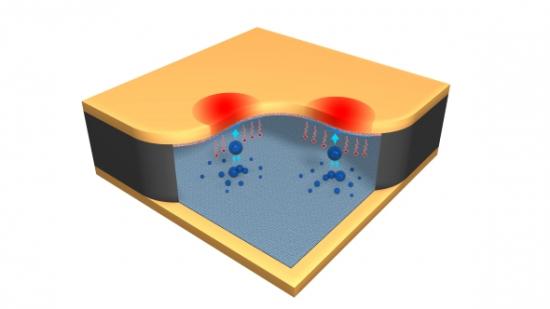If you were wondering when your twin passions of PC gaming and dance would finally converge, wonder no longer – engineers at Duke University have created a technology that utilises ‘dancing’ water droplets and a sponge-like material to whisk heat away from your components.
This tech could be especially handy for overclockers, but you’ll need to know how to do it first. Check out our overclocking guide to see how it’s done.
The study was inspired by a cicada’s wings, which stay clean through water droplets ‘jumping’ from their hydrophobic surface and carrying dirt with them. They ‘jump’ because the act of merging reduces their surface area and releases a small amount of energy, essentially ‘pushing’ against the hydrophobic surface, and launching the droplets into the air.

For this effect to work in component cooling, the researchers use a vapour chamber, attached to the offending heat-generator, with a sponge-like layer at the heated contact point and a hydrophobic surface on the opposite side of the chamber.
The hotspots in the components vaporise the water trapped in the sponge layer, which then collects on the surface below. ‘Passive cooling structures’ in the hydrophobic surface cool the droplets before they merge together and jump back up into the sponge to repeat the process again. Another useful effect of this technique is that it doesn’t require gravity to work, meaning it’ll have the exact same effect however it’s oriented.
The current top dog of heat reduction, in terms of popularity at least, is the copper heat spreader, which absorbs heat and transfers it down its length while fans cool it. The water droplet technique aims to displace this method through its use of an extra dimension to spread heat over.
“As an analogy,” said Duke associate professor Chuan-Hua Chen, “to avoid flooding, it is useful to spread the rain over a large area. But if the ground is soaked, the water has no vertical pathway to escape, and the flooding is inevitable. Flat-plate heat pipes are remarkable in their horizontal spreading, but lack a vertical mechanism to dissipate heat.”
While Chen figures they have traditional heat sinks beaten in that area, he says getting the system to a competitive level has taken a while.
“It has taken us a few years to work the system to a point where it’s at least comparable to a copper heat spreader, the most popular cooling solution,” he said, “but now, for the first time, I see a pathway to beating the industry standards.”
Do you think the dancing droplets will be cooling your PC in the future, or is this a non-starter? What do you think they should call it?
